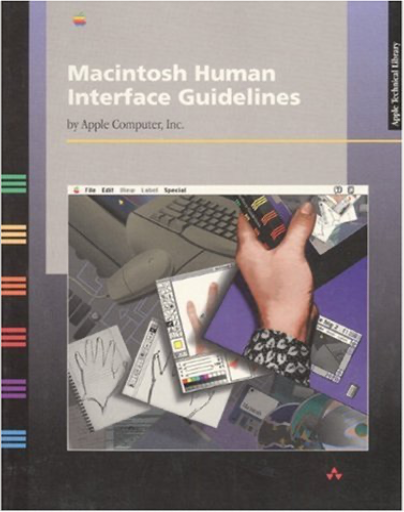 Since 1985, Apple and Addison-Wesley have been publishing authoritative books about Apple technologies. The Apple Technical Library provides Macintosh developers with the official treatment of all the major new technologies that Apple releases. Timely, accurate, and clear, this collection of books is the essential resource for anyone developing software for the Macintosh. You'll find definitive coverage of the newest and most important technologies, such as QuickDraw 3D and Apple Guide. You'll also find the classic cornerstones of Macintosh development, like Macintosh Human Interface Guidelines, MacsBug Reference and Debugging Guide, and Planning and Managing AppleTalk Networks. Care has been taken to provide the information using the most appropriate medium. From the multimedia presentations of Electronic Guide to Macintosh Human Interface Design to the electronic reference included with Advanced Color Imaging on the Mac OS, the material is presented in the way that allows you to access it most effectively. 0201622165B04062001 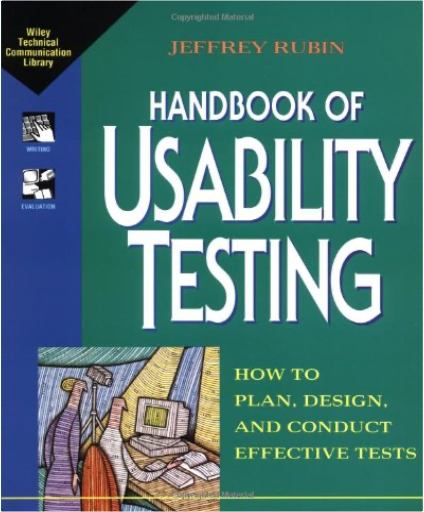 A supremely usable nuts-and-bolts guide for beginners. A daily tool of the trade for specialists. Handbook of Usability Testing gives you practical, step-by-step guidelines in plain English. Written by Jeffrey Rubin, it arms beginners with the full complement of proven testing tools and techniques. From software, GUIs, and technical documentation, to medical instruments, VCRs, and exercise bikes, no matter what your product, you'll learn to design and administer extremely reliable tests to ensure that people find it easy and desirable to use. 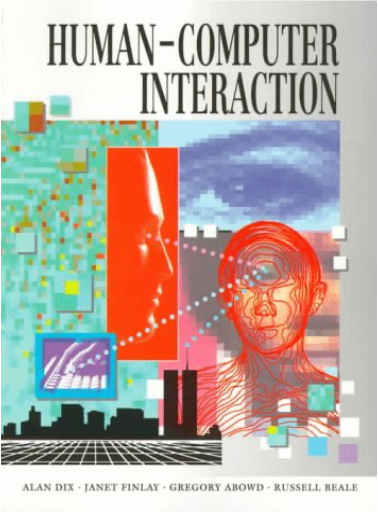 This textbook introduces the foundations of human-computer interaction, covering basic psychology and computer technology, models and methods for interface design and applications. It can be used as a text for a course in HCI or as the basis for a curriculum in HCI, with sections of it being taken separately for single course units. Later parts of the book cover more advanced material, but no initial knowledge is assumed. The authors have combined a broad, yet detailed look at HCI from a psychological and computer science perspective, which emphasizes the design of interactive systems. The text is supported by worked examples and exercises of varying difficulty and suggested projects.  In this landmark book, Terry Winograd shows how to improve the practice of software design by applying lessons from other areas of design to the creation of software. The goal is to create software that works — really works — because it is both appropriate and effective for the people who use it. The book contains essays contributed by prominent software and design professionals, interviews with experts, and profiles of successful projects and products. These elements are woven together to illuminate what design is, to identify the common core of practices in every design field, and to show how software builders can apply these practices to produce software that is more satisfying for users. The initial chapters view software from the users perspective, featuring the insights of experienced software designers and developers, including Mitchell Kapor, David Liddle, John Rheinfrank, Peter Denning, and John Seely Brown. Subsequent chapters turn to the designer and the design process, with contributions from designers and design experts, including David Kelley, Donald Sch?n, and Donald Norman. Profiles discussing Mosaic, Quicken, Macintosh Human Interface Guidelines, Microsoft Bob, a 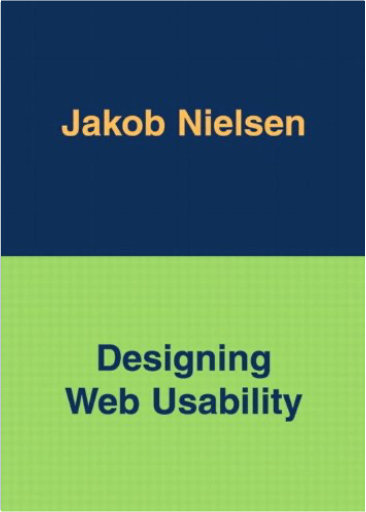 Users experience the usability of a web site before they have committed to using it and before making any purchase decisions. The web is the ultimate environment for empowerment, and he or she who clicks the mouse decides everything. Designing Web Usability is the definitive guide to usability from Jakob Nielsen, the world's leading authority. Over 250,000 Internet professionals around the world have turned to this landmark book, in which Nielsen shares the full weight of his wisdom and experience. From content and page design to designing for ease of navigation and users with disabilities, he delivers complete direction on how to connect with any web user, in any situation. Nielsen has arrived at a series of principles that work in support of his findings: 1. That web users want to find what they're after quickly; 2. If they don't know what they're after, they nevertheless want to browse quickly and access information they come across in a logical manner. This book is a must-have for anyone who thinks seriously about the web.  "When the concept of the interface first began to emerge, it was commonly understood as the hardware and software through which a human and a computer could communicate. As it has evolved, the concept has come to include the cognitive and emotional aspects of the user's experience as well...The noun, interface is taken to be a discrete and tangible thing that we can map, draw, design, implement, and attach to an existing bundle of functionality. One of the goals of this book is to explode that notion and replace it with one that can guide our work in the right direction." - From the Introduction The Art of Human-Computer Interface Design is an extraordinary work in the field of human-computer interaction. With never-before-published pieces by more than fifty of the major thinkers and explorers in the field, this book provides an intriguing look at some of the most exciting developments in interface design. Readers will discover the newest technologies such as cyberspace, animation, multimedia, and speech recognition and will explore the philosophical and psychological background to creating effective interfaces.The first section of The Art of Human-Computer Interface Design, "Creativity and Design," offers insight into general interface issues. The "Users and Contexts" section details the experiences of a variety of users and designers, providing invaluable input for interface designers. The "Sermons" sections is a collection of thought-provoking pieces by some of the people whose work and points of view have deeply influenced human-computer interaction—Donald Norman, Nicholas Negroponte, Ted Nelson, Alan Kay, Jean-Louis Gassee, Timothy Leary, and Ben Shneiderman. The fourth section, "New Directions," looks at some of the ideas and theories that are on the frontiers of human-computer interface design. A treasury of ideas and opinions from leading thinkers in the computer industry, The Art of Human-Computer Interface Design delves into the strategies, reasoning, and future direction of human-computer interaction and the overall relationship between computers and people. 0201517973B04062001  Unix has a reputation for being cryptic and difficult to learn, but it doesn't need to be that way. Think Unix takes an analogous approach to that of a grammar book. Rather than teaching individual words or phrases like most books, Think Unix teaches the set of logical structures to be learned. Myriad examples help you learn individual commands, and practice problems at the end of difficult sections help you learn the practical side of Unix. Strong attention is paid to learning how to read "man pages," the standard documentation on all Unix systems, including Linux. While most books simply tell you that man pages exist and spend some time teaching how to use the man command, none spend any significant amount of space teaching how to use the content of the man pages. Even if you are lost at the Unix command prompt, you can learn subsystems that are specific to the Unix flavor. |  Stories define how we think, the way we play, and the way we understand our lives. And just as Gutenberg made possible the stories that ushered in the Modem Era, so is the computer having a profound effect on the stories of the late 20th century. Today we are confronting the limits of books themselves — anticipating the end of storytelling as we know it — even as we witness the advent of a brave new world of cyberdramas. Computer technology of the late twentieth century is astonishing, thrilling, and strange, and no one is better qualified than Janet Murray to offer a breathtaking tour of how it is reshaping the stories we live by. 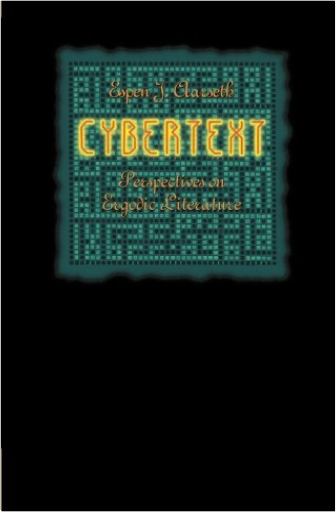 Can computer games be great literature? Do the rapidly evolving and culturally expanding genres of digital literature mean that the narrative mode of discourse―novels, films, television series―is losing its dominant position in our culture? Is it necessary to define a new aesthetics of cyborg textuality?  Designing Information Technology in the Postmodern Age puts the theoretical discussion of computer systems and information technology on a new footing. Shifting the discourse from its usual rationalistic framework, Richard Coyne shows how the conception, development, and application of computer systems is challenged and enhanced by postmodern philosophical thought. He places particular emphasis on the theory of metaphor, showing how it has more to offer than notions of method and models appropriated from science.  The "information superhighway" is a metaphor oft used to describethe internet, used so often that Stefik fears we're in danger ofsubjecting the evolution of the net to the limiting implications of this metaphor. Stefik, along with a host of prescient technothinkers and doers, examine four richer, more powerful metaphorsand their Jungian archetypes that together should expand anyone'sthinking about the cyber world... And those metaphors are: digitallibrary (The Keeper of Knowledge), electronic mail (Communicator),electronic marketplace (Trader), and digital world (Adventurer).The summoning of the archetypes in service of Stefik's argument isless silicon psychobabble than it is a compelling way to organizethis book around the very real ways in which the net is being used.CONTRIBUTORSThe I-Way as Publishing and Community MemoryVannevar Bush, J. C. R. Licklider, Robert E. Kahn, Joshua Lederberg, John Browning, Scott D. N. Cook, Vicky Reich, Mark Weiser, Ranjit MakkuniThe I-Way as a Communications Medium Lee Sproull, Samer Faraj,Jay Machado, Lynn Conway, Joshua Lederberg.Selling Goods and Services the I-Way Thomas Malone, JoanneYates, Robert Benjamin, Laura Fillmore, Mark StefikThe I-Way as a Gateway to Experience Pavel Curtis, JulianDibbell, Harry Collins, Mark Stefik, John Seeley Brown, William Wulf,Barbara Viglizzo 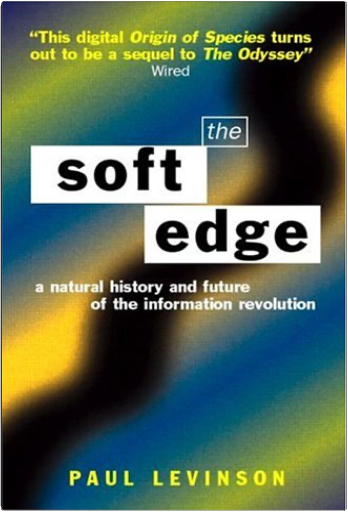 The Soft Edge is a one-of-a-kind history of the information revolution. In his lucid and direct style, Paul Levinson, historian and philosopher of media and communications, gives us more than just a history of information technologies. The Soft Edge is a book about theories on the evolution of technology, the effects that human choice has on this (r)evolution, and what's in store for us in the future. 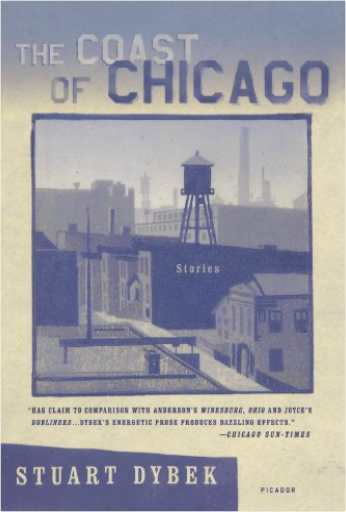 The stolid landscape of Chicago suddenly turns dreamlike and otherworldly in Stuart Dybek's classic story collection. A child's collection of bottle caps becomes the tombstones of a graveyard. A lowly rightfielder's inexplicable death turns him into a martyr to baseball. Strains of Chopin floating down the tenement airshaft are transformed into a mysterious anthem of loss. Combining homely detail and heartbreakingly familiar voices with grand leaps of imagination, The Coast of Chicago is a masterpiece from one of America's most highly regarded writers. |

library 101720
Collection Total:
1,127 Items
1,127 Items
Last Updated:
Oct 17, 2020
Oct 17, 2020


 Made with Delicious Library
Made with Delicious Library